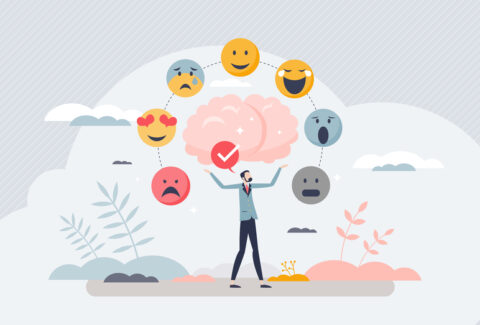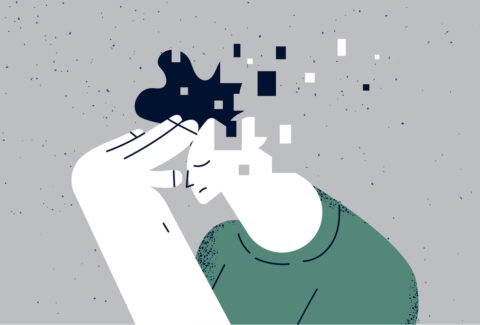The Practice of Imagination-Focused Therapy

The Practice of Imagination-Focused Therapy
So far, we have written five articles on Imagination-Focused Therapy (IFT). In almost all of them, we have alluded to the 4 Goals of IFT. We have also alluded to the 7 Components of IFT and the 4 Steps all clinicians can take to make IFT available to their clients, so they then benefit from it. In this article, we are going to elaborate on all that. We are also going to elaborate on the practice of IFT, building up on our fifth article, entitled, How to Start Using Your Imagination
The 4 Goals of Imagination-Focused Therapy
- Clients learn about their cognitive function of imagination. They learn that their cognitive function of imagination is one of their highest cognitive faculties. They learn that their cognitive function of imagination is the intrinsic process of how they think, how they create, and how they undo, so that they can redo, and then do again.
- Clients increase their awareness on how they have been using their cognitive function of imagination. Clients come to realize that they have not been aware of their cognitive function of imagination. They realize that they have not been paying attention to their use of their cognitive function of imagination. And they realize that they did not even know that they needed to be aware of how they use their cognitive function of imagination throughout the day. They then make the decision to notice, to become aware, and to start making conscious use of their imagination.
- Clients learn how to reap the infinite benefits of their cognitive function of imagination. Clients are now aware of their cognitive function of imagination, of how it works, and how they’ve been using it all along. Clients are now aware of the consequences of continuing to use their cognitive function of imagination unconsciously, of the benefits of starting to use it consciously, and they have made the decision to use their cognitive function of imagination consciously. They also have been learning how to do that, and they now start to reap the infinite benefits of their powerful cognitive function of imagination
- Clients learn how to implement the use of their cognitive function of imagination in every single aspect of their lives. Clients have learned to make conscious use of their cognitive function of imagination. They have learned how to reap its infinite benefits. And now they are learning how to transfer the different benefits into each of the 7 Areas of Life.
Let Us Now Look at the 7 Components of IFT.
The 7 Components of IFT are simple to implement. They follow a stepwise approach that builds as you go from one step to the next. They also are the steps used to help our clients achieve the 4 Goals outlined above, in an orderly sequence.
- Psychoeducation[1]
This component helps our clients learn and discover what our cognitive function of imagination is
- Awareness
This component helps our clients raise their awareness on their cognitive function of imagination.[2]
- Intellectual Understanding
In this component, our clients learn, in a very digestible way, the basic science of the cognitive function of imagination.[3]
- The Unconscious Way
In this component, our clients learn how to develop a full understanding of the unconscious way of their cognitive function of imagination, including how they’ve been using it against themselves.
- Conscious-Based Action
In this component, our clients learn how to successfully make conscious use of their cognitive function of imagination
- Awareness Enhancement
In this component, our clients learn how to gain experiential knowledge and understanding of the infinite ability of the cognitive function of imagination and learn how to apply such ability
- Mastery[4]
In this component, our clients learn how to apply skills acquired through the first six components in every single aspect of life
What About the Steps Clinicians Ought to Take to be Able to Make IFT Available to their Clients?
As a clinician, you can start using IFT in your practice, by taking the following steps:
- Learn about the science of imagination
Develop an intellectual understanding of the cognitive function of imagination. Learn what it is and what it is not. Learn how it works, what it leads to, and its implications.
- Obtain an experiential understanding
An experiential understanding of how you, just like everyone else, may have been using your own cognitive faculty of imagination. Develop an experiential understanding of how you may have been using your cognitive function of imagination unconsciously. And develop an experiential understanding of the consequences of an unconscious use of our cognitive function of imagination
- Start to use your imagination with more awareness and to effect change in your own life
Learn how to make the decision to start making use of your cognitive function of imagination. Commit to do that and be determined to practice, implement, reap the related benefits in your own life, and transfer such benefits to each and every one of the 7 Areas of Life
- Learn how to help your clients do the same
As a clinician, you are a model. While you cannot give what you do not have, the more you have the more you can give. You now have new intellectual and experiential knowledge and understanding of your cognitive function of imagination. You now have full awareness of how you have been using your own cognitive function of imagination against you, and you have learned to shift that to the conscious use of it. You now have learned how to properly practice, implement, and reap the benefits of your cognitive function of imagination in your life and each of the 7 Areas of Life. And now you are ready to consciously model for your clients.
Here is a set of inquiries to get you started:
- How certain are you that you have a cognitive function of imagination?
- How do you know whether you have a cognitive function of imagination?
- Where does your imagination usually take you?
- How aware are you of your cognitive function of imagination?
- How much conscious use have you been making of your cognitive function of imagination?
- How different would your life be if you were making conscious use of your cognitive function of imagination?
- What does it take for you to start making conscious use of your cognitive function of imagination?
Here you go. An elaboration on the 4 Goals of IFT, its 7 Components, and the 4 Steps for you, as a clinician, to follow, to start making conscious use of your cognitive function of imagination, reaping its infinite benefits, transferring them into all 7 Areas of Life, and learning how to help your clients do the same.
Are you ready for this? Are you looking forward to it? If so, please click HERE to enroll now.
[1] Atri, Ashutosh, and Manoj Sharma. “Psychoeducation.” Californian Journal of Health Promotion 5.4 (2007): 32-39.
[2] Werning, Markus. “Self-awareness and imagination.” The explanation of human interpretation (2004): 369-377.
[3] Murphy, Alice. “Imagination in science.” Philosophy Compass 17.6 (2022): e12836.
[4] Younger, Janet B. “A theory of mastery.” Advances in Nursing Science 14.1 (1991): 76-89.






